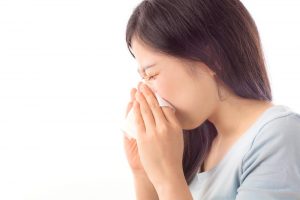Causes of Typhoid Fever

Typhoid fever is an acute illness associated with fever caused by the Salmonella enterica serotype Typhi bacteria. It can also be caused by Salmonella paratyphi, a related bacterium that usually causes a less severe illness. The bacteria are deposited in water or food by a human carrier and are then spread to other people in the area. These are some of the causes of typhoid fever.
The incidence of typhoid fever in the United States has markedly decreased since the early 1900s, when tens of thousands of cases were reported in the U.S. Today, less than 400 cases are reported annually in the United States, mostly in people who have recently traveled to Mexico and South America. This improvement is the result of better environmental sanitation.
Typhoid fever is caused by Salmonella typhi
Typhoid fever is caused by virulent bacteria called Salmonella typhi (S. typhi). Although they’re related, S. typhi and the bacteria accountable for salmonellosis, another serious intestinal infection, aren’t the same. The bacteria that cause typhoid fever spread through contaminated food or water and occasionally through direct experience of someone who is infected. In developing nations, where typhoid fever is endemic, many cases result from contaminated drinking tap water and poor sanitation. Many people in industrialized countries get typhoid bacteria while traveling and spread it to others through the fecal-oral route.
Signs and symptoms of typhoid
Signs and symptoms of typhoid are likely to develop gradually — often appearing one to three weeks after exposure to the disease.
Once signs and symptoms do appear, you’re likely to experience
- Sweating
- Muscle aches
- Loss of appetite and weight loss
- Abdominal pain
- Diarrhea or constipation
- Rash
- Dry cough
- Weakness and fatigue
- Extremely swollen abdomen
- Later illness
- Fever that starts low and increases daily, possibly reaching as high as 104.9 F (40.5 C)
- Headache
Typhoid fever treatment and prevention
Two vaccines are available. One is injected in one dose at least one week before travel. One is given orally in four capsules, with one capsule to be studied every other day. Neither vaccine is 100 percent effective, and both require repeat immunizations, as vaccine effectiveness diminishes over time. Because the vaccine won’t provide complete protection, follow these guidelines when visiting high-risk areas:
Wash your hands. Frequent hand-washing in hot, soapy water is the greatest way to control infection. Wash before eating or preparing food and after utilising the toilet. Carry an alcohol-based hand sanitizer for instances when water isn’t available.
Avoid drinking untreated water. Contaminated normal water is a particular problem in areas where typhoid fever is endemic. For that reason, drink only bottled water or canned or bottled carbonated beverages, wine and beer. Carbonated bottled water is safer than uncarbonated bottled water is. These are some of the typhoid fever treatment and prevention. Make sure that you are away from causes of typhoid fever.















